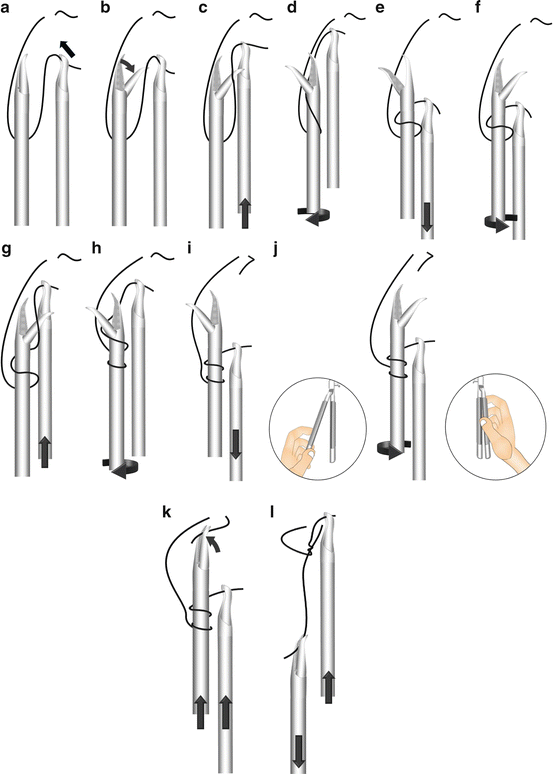Fig. 11.1
Types of inline handles
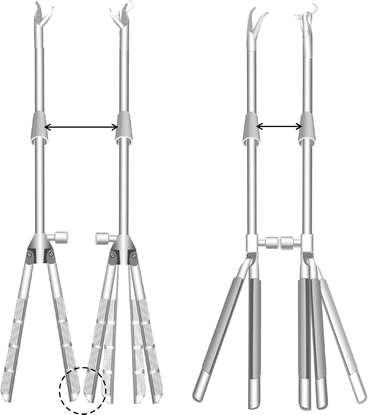
Fig. 11.2
Clashing of handles

Fig. 11.3
Screw off
To approximate the tissue, it is absolutely necessary to grasp the tissue by an assistant forceps with rotating mechanism. Otherwise, even with the single-action type, depending upon how you open the handle, the handles may easily interfere with each other. In order to avoid this, it is also helpful to use a needle holder that has a rotation knob (Fig. 11.4). It is recommended to use a diamond type jaw surface, not a serrated type, which can provide with a good grip. It is of key importance to use the needle driver and assisting forceps of different length to avoid interference of the handles (Fig. 11.5). The handle grip needs a little “twist”, too. If one holds an in-line type handle with a palm grip, the operator’s hands interfere with each other, so it is better to hold it with a pencil grip (Fig. 11.6).
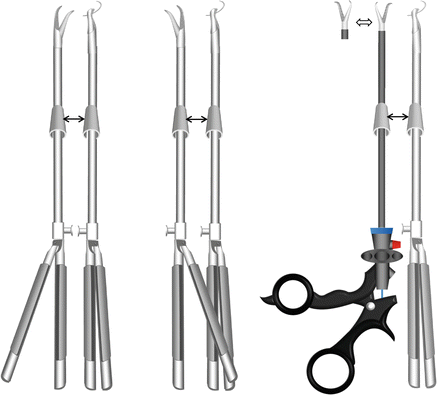
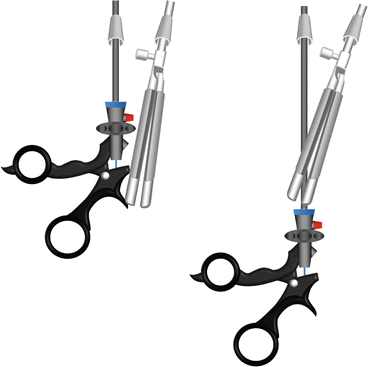
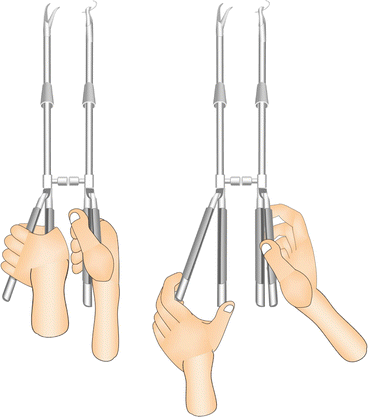

Fig. 11.4
The handle interference

Fig. 11.5
Change the length of forceps

Fig. 11.6
Palm grip and pencil grip
In conclusion, at present, for needle holders, the Szabo-Berci needle holder or the Snowden-Pencer needle holder with a rotation knob are both considered very useful.
11.3 Knot-Tying Technique in Reduced Port Laparoscopic Surgery
In general, the use of two needle holders makes knot tying easier. We will describe our “thumb’s up technique” [1] which can even be done with almost parallel needle holders as shown in the illustration.
Get Clinical Tree app for offline access

1.
Make “C loop” (Fig. 11.7a)

